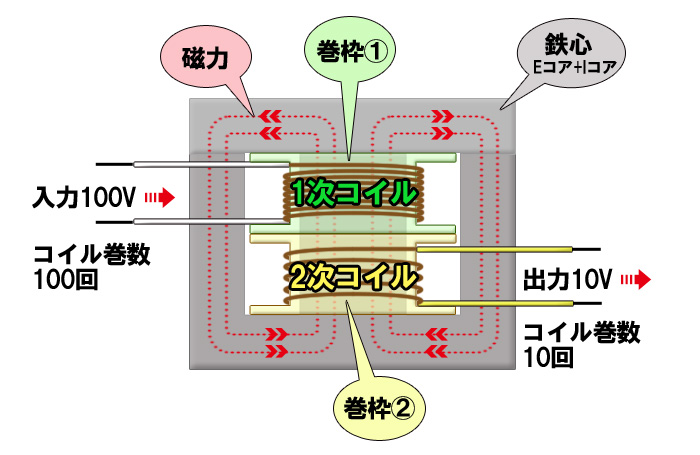Regulation 意味 : What it is
Regulation - Embracing Change for a Safer Future In today's rapidly evolving digital landscape, the concept of regulation has become increasingly important. While some may view it as a restriction or hindrance to progress, regulation plays a vital role in ensuring fairness, accountability, and safety across various sectors. In this article, we will explore the meaning and significance of regulation, with a specific focus on its impact on the world of cryptocurrency. So, fasten your seatbelts as we dive into the exciting world of regulation and how it is shaping our future! 1. The Evolution of Regulation: From Traditional Industries to the Digital Era Regulation has always been an integral part of society, governing various aspects of our lives. Whether it's food safety regulations, traffic laws, or financial regulations, these measures are put in place to protect individuals and maintain order. However, with the advent of technology and the rise of digital platforms, the scope and nature of regulation have undergone a significant transformation. In the past, regulatory frameworks were primarily designed to govern traditional industries such as banking, healthcare, and manufacturing. However, as our lives have become increasingly digitalized, new challenges and opportunities have emerged, calling for novel regulatory approaches. 2. Introducing Cryptocurrency: A Paradigm Shift in Finance One of the most notable examples of the collision between technology and regulation is the emergence of cryptocurrency. Cryptocurrency, such as Bitcoin and Ethereum, has disrupted the traditional financial ecosystem, offering decentralized and secure alternatives to traditional banking systems. However, this disruptive innovation has also raised concerns regarding consumer protection, money laundering, and market stability. The regulatory response to cryptocurrencies has been diverse, with different countries adopting varying approaches. Some nations have embraced cryptocurrencies, recognizing their potential for economic growth and innovation. Others, however, have taken a cautious stance, imposing strict regulations and limitations. 3. Striking a Balance: The Need for Effective Cryptocurrency Regulation As with any technological advancement, cryptocurrency presents both opportunities and challenges. While it offers the promise of financial inclusivity, borderless transactions, and enhanced privacy, it also poses risks such as volatility, fraud, and illicit activities. Therefore, striking a balance through effective regulation becomes crucial. a. Ensuring Investor Protection: Safeguarding Against Scams and Fraud One of the primary concerns surrounding cryptocurrencies is the prevalence of scams and fraudulent activities. The decentralized and pseudonymous nature of cryptocurrency transactions makes it an attractive avenue for cybercriminals. Therefore, robust regulatory measures are necessary to protect investors from falling victim to fraudulent schemes. To address this issue, regulatory bodies have implemented Know Your Customer (KYC) and Anti-Money Laundering (AML) policies, aimed at enhancing transparency and preventing illicit financial activities. By imposing strict registration and reporting requirements on cryptocurrency platforms, regulators strive to create a safer investment environment. b. Mitigating Market Volatility: Fostering Stability and Trust Cryptocurrency markets are highly prone to volatility, often experiencing sharp price fluctuations within short periods. While this volatility can be appealing to traders and speculators, it also amplifies risks for investors and undermines market stability. To address this challenge, regulatory efforts focus on introducing mechanisms to mitigate excessive price swings and promote stability. Examples of such measures include the establishment of regulatory sandboxes, where innovative cryptocurrency projects can be tested under supervised conditions, and the implementation of circuit breakers to temporarily halt trading during periods of extreme volatility. These initiatives aim to instill confidence in the market and attract a wider range of participants, beyond the stereotypical "tech bro" image. c. Promoting Innovation: Nurturing a Thriving Cryptocurrency Ecosystem While regulation is essential for safeguarding investors and ensuring market stability, it must not stifle innovation. Striking the right balance between regulation and innovation is a delicate task for policymakers. Forward-thinking regulators are proactively engaging with industry stakeholders and seeking their input to create regulatory frameworks that foster innovation while maintaining appropriate safeguards. By nurturing a thriving cryptocurrency ecosystem, regulators aim to encourage technological advancements, attract investment, and unlock the full potential of this transformative technology. 4. FAQ: Addressing Common Concerns and Misconceptions a. Is regulation necessary for cryptocurrencies? Yes, regulation is necessary for cryptocurrencies to address concerns such as fraud, money laundering, and market stability. It helps establish a framework that both protects users and fosters innovation in the sector. b. Will regulation kill the spirit of decentralization? While regulation may bring some degree of centralization to certain aspects of cryptocurrencies, it does not necessarily undermine the core principles of decentralization. It aims to strike a balance between safety and innovation, ensuring that the benefits of decentralization are not overshadowed by risks. c. How can individuals ensure compliance with cryptocurrency regulations? Individuals can ensure compliance by using regulated cryptocurrency platforms, completing necessary KYC/AML procedures, and following local laws and reporting requirements. Staying informed about regulatory updates and seeking professional advice can also help navigate the evolving regulatory landscape. 5. The Future of Regulation: Embracing Change for a Safer Digital World As technology continues to transform our lives, regulation must adapt to ensure a safer and more inclusive digital world. The dynamic nature of cryptocurrencies demands innovative regulatory approaches that balance protection and progress. By fostering collaboration between regulators, industry participants, and consumers, we can collectively shape a regulatory landscape that enables the benefits of cryptocurrencies while mitigating associated risks. In conclusion, regulation is not an enemy to progress but rather a necessary tool for shaping a secure and fair future. By embracing change and adopting effective regulatory measures, we lay the foundation for a thriving digital ecosystem where individuals can confidently participate and businesses can innovate responsibly. So, let us embrace the era of regulation and work towards a future that harnesses the full potential of technology for the benefit of all.  Image Source : www.smurfmania.com
Image Source : www.smurfmania.com  Image Source : news.mynavi.jp
Image Source : news.mynavi.jp  Image Source : www.agoniefilm.com
Image Source : www.agoniefilm.com  Image Source : zooqle.co.in
Image Source : zooqle.co.in  Image Source : shop.mademyday.com
Image Source : shop.mademyday.com  Image Source : kotoba.wiki
Image Source : kotoba.wiki  Image Source : biz.trans-suite.jp
Image Source : biz.trans-suite.jp  Image Source : gimon-sukkiri.jp
Image Source : gimon-sukkiri.jp
2600W 2800W3000W3200WワットAC110 220VからDCTTW-RSP-S-3000W-60VSMPSスイッチング電源
 Image Source : www.smurfmania.com
Image Source : www.smurfmania.com 「おもむろに」の意味は? 例文とともに類語・対義語・英語表現も紹介 | マイナビニュース
 Image Source : news.mynavi.jp
Image Source : news.mynavi.jp Zones Of Regulation Activity
 Image Source : www.agoniefilm.com
Image Source : www.agoniefilm.com Cryptocurrency Isn’t Just For Tech Bros Anymore - Zooqle
 Image Source : zooqle.co.in
Image Source : zooqle.co.in Brasil Tanga Beach Bikini Slip Regulation String Tanga Sexy XS S M L
 Image Source : shop.mademyday.com
Image Source : shop.mademyday.com Penal Regulation の意味・例文・発音・語源・イメージ画像 - KOTOBA
 Image Source : kotoba.wiki
Image Source : kotoba.wiki 「レギュレーション」の意味とは?様々な使い方を英語とともに解説 | TRANS.Biz
 Image Source : biz.trans-suite.jp
Image Source : biz.trans-suite.jp レギュレーションの意味は?ロゴや遊戯王における意味も解説! – スッキリ
 Image Source : gimon-sukkiri.jp
Image Source : gimon-sukkiri.jp Penal regulation の意味・例文・発音・語源・イメージ画像. Cryptocurrency isn’t just for tech bros anymore. Zones of regulation activity. Brasil tanga beach bikini slip regulation string tanga sexy xs s m l. 2600w 2800w3000w3200wワットac110 220vからdcttw-rsp-s-3000w-60vsmpsスイッチング電源